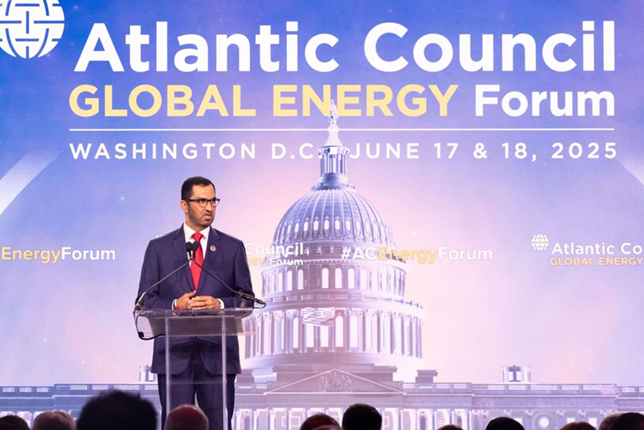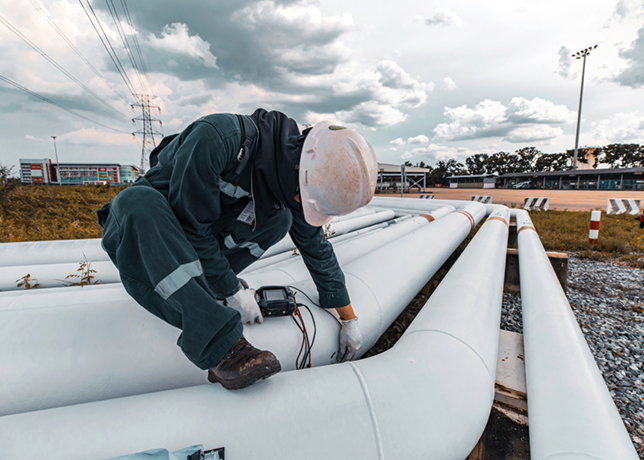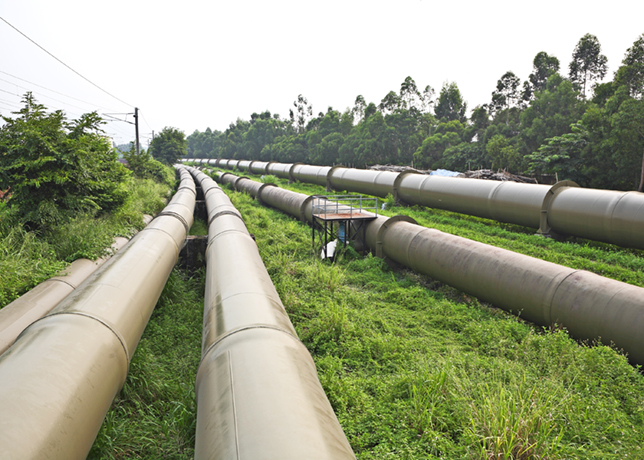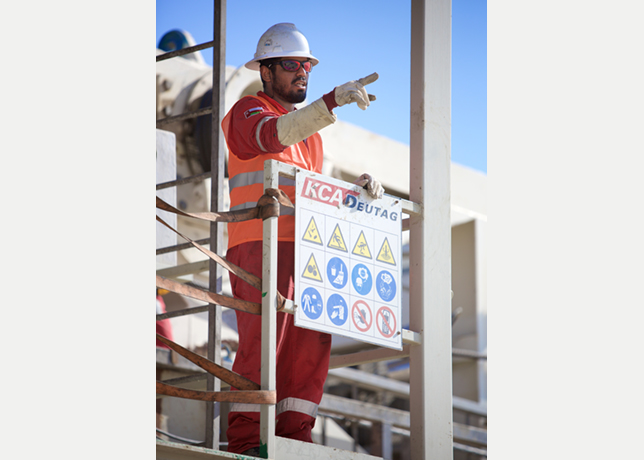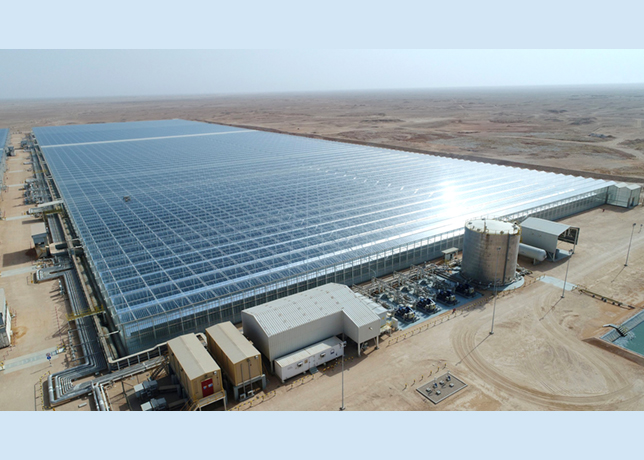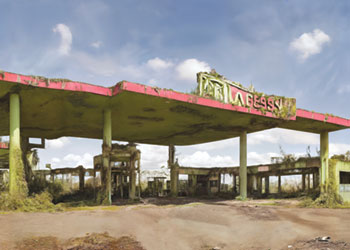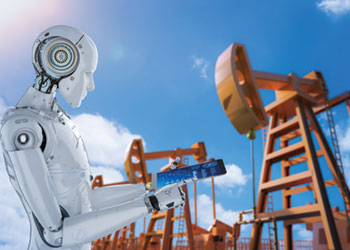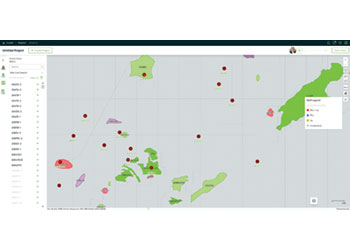
 Well colour-coding using Ikon Science's Curate 2023.2
Well colour-coding using Ikon Science's Curate 2023.2
Automating repeatable tasks using ML frees specialists to apply their knowledge to decision-making protocols to deliver improved results in the office and oil field, Chris Hanton from Ikon Science tells OGN
The term energy trilemma is one the oil and gas industry has become familiar with as it looks to balance the growing global population’s need for affordable, low carbon and dependable energy supplies.
These crucial factors require abundant energy from several sources at a time when the energy industry continues to recover from drastic headcount reductions resulting from the Covid-19 pandemic and a rapidly aging workforce.
The upstream plays a vital role in addressing our global energy trilemma - whether maximising fossil fuel production, accelerating geothermal asset development or identifying and monitoring subsurface carbon capture sinks long-term.
Many of the seasoned workflows used today in oil and gas are equally relevant to low-carbon initiatives.
However, transitioning these valuable workflows to be applied effectively to carbon capture and storage (CCS) and renewable energy efforts is challenged by the significant loss of experienced personnel.
When striving to meet emissions targets, a healthy blend of new renewable energy sources and carbon management projects are necessary to ensure environmental goals aren't delivered at the exclusion of societal and economic requirements.
As with many nascent and developing industries, personnel and investment often lags behind established industries.
Efficient working practices is vital for growth in these sectors, as the hiring and training costs companies would incur to onboard thousands of new workers would be prohibitive.
These persistent challenges across the energy industry have led to increased interest in Machine Learning (ML) and stoked the hope that the long-promised value of ML will be realised in revolutionising oil and gas.
ML is no longer an unproven technology. There are ML success stories – as well as many cautionary tales – stemming from failed projects, and lower than expected returns on investment. It's often stated that 90 per cent of digital transformation initiatives fail, and the implementation of ML and AI certainly falls into that figure.
 |
The revamped Cross-plot 3D |
The subsurface has proven particularly difficult when it comes to proving the value of these initiatives.
The primary use of ML in the subsurface space has been to improve final deliverables, creating an incremental increase in the accuracy of models used in the decision-making process. However, these projects typically have limited scope to increase business practices across a company.
Asset-specific models lack transferability across business units, while important prep work such as data location, cleansing and validation often increases the amount of time it takes to deliver a project.
This doesn’t mean these approaches lack merit, but to truly move the needle and deliver the cost savings and efficiency increases that ML advocates believe are possible, the approach needs to be altered.
Automating entire workflows and occupations has been a lofty goal for ML and AI, and these possibilities remain distant today.
A McKinsey paper estimates that only 5 per cent of occupations may be entirely automated, however 60 percent of occupations could potentially automate 30 percent of their tasks.
It’s the automation of time-intensive and vital yet highly repeatable portions of workflows that energy companies hope ML can address.
In the subsurface, trying to create an entirely automated model is an incredibly complex and involved task with huge amounts of trial and error as part of the iterative refinement cycle.
However, solving some of the pre-model data cleansing, manipulation and model setup can be outsourced to be performed by guided, automated workflows.
Automating this preparatory work can free up subsurface specialists to create more value for their organisations through contributions to the decision-making process.
The Rock Physics Machine Learning (RPML) application, created by Ikon Science, was built specifically to advance this very approach.
RPML’s ability to optimise model and parameter selection based on data inputs allows geoscientists to instantly begin applying their subsurface specialist knowledge to reduce set up time and enable a single resource to work across multiple assets.
The removal of subjective processing also reduces human input bias, leading to new levels of consistency across all business units.
These advantages have important implications, including quickening the delivery of well service projects and relieving constraints on key personnel.
These types of results enable the energy industry to meet the world’s energy demands with a constrained workforce.
Focusing on repeatable tasks that are not specialised also allows geoscientists to productise ML, moving the discipline from the fringes of R&D into a common tool asset teams depend upon in their daily workflows.
Applied correctly to the upstream, ML has great potential to transform our industry.
Leveraging ML as a tool to automate lower-level workflows and empower end-users, rather than replace them, can serve as a catalyst to promote faster decision-making and reduce bottlenecks.
Automating repeatable tasks while optimising models releases specialists to apply their valuable knowledge to companies’ decision-making protocols to deliver improved results in the office and oil field.
Chris Hanton is the Director of Digital Transformation Solutions at Ikon Science, overseeing the development and implementation of the next generation of software solutions. He has over 15 years industry experience working with global operators delivering subsurface solutions and technology to promote efficiency and productivity.
Hanton has an MeSci from the University of Liverpool in Geology and an MSci from the University of Aberdeen in Integrated Petroleum Geoscience.





















